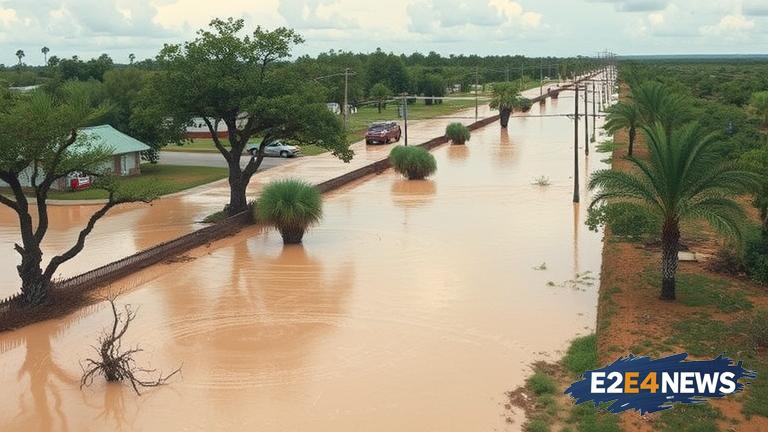The state of Texas has been grappling with the issue of flooding for years, and a recent report has highlighted the enormity of the problem. According to the state’s flood plan, a whopping $54 billion is required to provide adequate flood protection to its citizens. This staggering figure has raised concerns about the state’s ability to fund such a massive undertaking. Despite the challenges, Texas has already taken steps to address the issue, allocating hundreds of millions of dollars for flood-related projects. However, this amount is just a drop in the ocean compared to the total funds needed. The state’s flood plan identifies several key areas that require attention, including the construction of new flood control infrastructure, the upgrade of existing systems, and the implementation of innovative flood mitigation strategies. One of the main challenges facing Texas is the sheer scale of the problem, with flooding affecting numerous counties and cities across the state. The impact of flooding is not limited to property damage, but also has significant social and economic implications, including displacement of communities and disruption of businesses. Furthermore, the frequency and severity of flooding events are expected to increase due to climate change, making it even more urgent for the state to take action. The $54 billion price tag is a daunting figure, but experts argue that the cost of inaction would be even higher. In addition to the financial burden, the human cost of flooding should not be underestimated, with many lives lost and families affected by these disasters. The state government has acknowledged the need for a comprehensive approach to flood protection, and efforts are underway to secure funding and implement the necessary measures. However, the process is complex and time-consuming, involving multiple stakeholders and requiring careful planning and coordination. As the state moves forward with its flood protection plans, it will be essential to prioritize the most vulnerable communities and ensure that the needs of all stakeholders are taken into account. The situation in Texas serves as a reminder of the importance of investing in flood protection and mitigation measures, not just in the United States but around the world. In conclusion, the state of Texas faces a significant challenge in addressing its flood protection needs, but with careful planning, coordination, and funding, it is possible to reduce the risk of flooding and create a safer and more resilient community for all. The state’s flood plan is a crucial step in this direction, and its implementation will require sustained effort and commitment from all stakeholders. As the state embarks on this journey, it is essential to remain vigilant and adapt to the evolving nature of the flood risk, ensuring that the measures implemented are effective and sustainable in the long term.
